#rather solve the same problem with similar solutions
Explore tagged Tumblr posts
Text
demons in sousou no frieren:
we do not understand human emotions, we do not feel them, to us it's all a game and even when we try it will inevitably lead to death, destruction and human suffering
also demons in sousou no frieren:
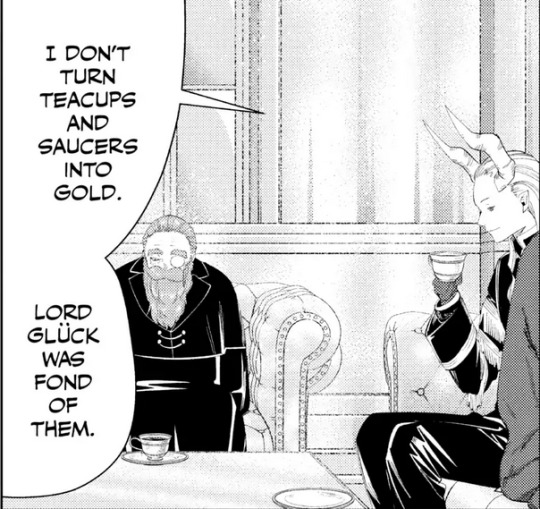
#the old man yaoi game is exquisite i was genuinely not expecting this goddamn#sousou no frieren#frieren: beyond journey's end#frieren at the funeral#macht of the golden land#lord gluck#mind you#the two statements aren't mutually exclusive#i'm excited to learn more about how and why demons live#that convergent evolution thing will probably come back#because usually convergent species might compete for resources#but they don't feed off each other#rather solve the same problem with similar solutions
104 notes
·
View notes
Text
Viktor and Jinx as Zaun, Jayce as Piltover, Arcane's use of art movements as a storytelling device
I am once again writing about Arcane because I am mentally ill and I also love Art history
So anyway I've already talk about Viktor being Art nouveau And how Art nouveau's history was similar to Viktor's story, and I wanted to talk about Jayce being Art Deco, because of his fashion choices in the last episode are pretty much art deco
But then I thought, what if it isn't just about Viktor and Jayce, but it's about Zaun and Piltover in general, and how the relationship between these two cities reflects in these two characters
And somehow I ended up writing this because FUCK
Look, I even got subtitles and everything
But anyway, I won't put citations on this because I'm not that crazy so this isn't a serious academic essay, and as anything else you read on the internet, take the parts about Art history with a grain of salt and you should read more about it (yess, this my elaborated plan to get people into Art history)
Jinx and Viktor as the personification of Zaun
Zaun actually has more of a punk on top rather than just art nouveau, a lot of people seem to think it's steampunk, but honestly, I think that's the result of putting punk and art nouveau together rather than it being pure steampunk
The thing that made me connect the characters as the embodiment of the cities was the fact that I've noticed that Zaun actually has a lot of art nouveau elements; is just that this art nouveau elements seem to be old and broken (I would show you but Tumblr's dumb image limit won't let me)
Now, I've actually talked about the story of art nouveau on another post but to make a brief summary, art nouveau started as a way to give common people art, to redistribute it rather than it just being something for rich people, it failed. But the important part is that art nouveau originally was a leftist art movement, like punk. Punk was a response to the social and economic crisis at the time of its origin; but where Art nouveau was a solution (solution that didn't work, mind you) punk was more of a response (again, don't quote me on that lmao)
Similar to this we can see, how both Viktor and Jinx then embody different responses to the same thing. Viktor is proposing a solution for the problems of Zaun (solution that didn't work) meanwhile Jinx is a reaction to everything that has happened to Zaun, she isn't a problem, she's a consequence
But not only are they the responses to Zaun, they ARE different parts of Zaun
We can see this with Jinx in the relationship she has with Vander, Silco and Ekko.
Both Vander and Silco nurture her and Zaun, and she wouldn't be what she is without both of them
That's why neither Silco nor Ekko could leave her. Silco couldn't give her away because that would be equivalent to him giving away Zaun, and Ekko couldn't give up on her because that would be like giving up on Zaun
Meanwhile with Viktor the influence of his style predominantly being art nouveau reflects in the background at different parts of the city,

And most noticeable is that when Zaun is in a better place, the elements of art nouveau are more prominent, like in episode 7 where punk takes a back seat to the art nouveau. It seems that generally art nouveau signifies a better Zaun, or the potential of it being better

We also see a lot of elements of art nouveau in Viktor's commune, and I know that the commune is interpreted as a negative thing. But look at it this way, what Viktor is doing, is probably doing more good than whatever the hell Caitlyn had going on during the first act (no hate to Cait btw)
Like, I know there are Caitlyn fans out there that defend her decisions of using the gray to attack the Chem barons, but in reality doing that wouldn't solve anything, just create a power vacuum that later could be filled by someone worse (like Renata Glasc) without solving the addiction to Shimmer (again, No hate to Cait). But what Viktor is doing, offering a safe space to recovering addicts and sick people, is actually solving the shimmer problem by eliminating the demand of it; and it's making Zaun better
(I also want to point out that the decision of framing Viktor's commune as a mind controlling cult is very politically charged, because even if it's not perfect; think about it; they're framing a commune in which money probably isn't used at all, and that accepts both recovering addicts and sick people freely and without judgment as something negative)
Add the fact that Viktor is one of the few characters that didn't talk negatively about Jinx (If I remember correctly); neither when he is disarming her bomb nor when he's in the commune talking directly to her; this could be interpreted as Viktor always seeing the potential within the Zaun of now
Adding to that, I want to make the point that Viktor and Jinx probably would be friends if they got to know each other. And I think this headcanon is so popular because they both are expressions of Zaun, of course they're going to be similar and get along
Art deco
Now, I'm not an expert in art deco (I've always been more interested in art nouveau and impressionism). But I know some things about it
Basically Art Deco comes from from the words art décoratif; and it was an art movement that emphasized the utility of art; it had different influences like Mayan art, Egyptian art, Art Nouveau, Rococo etc etc
Some of its characteristics are: straight lines, geometric patterns; a lot of gold, lots of triangles, more is more ideology and ornaments
But the important thing is that Art deco is supposed to be a very superficial art, merely decorative (hence the name); that signifies wealth. It also became strongly associated with machinery and progress. I would argue that in recent years there has been a new connotation of corruption and darkness to it thanks to media like Bioshock
It's definitely a perfect art movement for Piltover; to show the shallowness and money the city has. But the show not only attaches this art movement to the city, it also gives it different characters
Mel and Art Deco
This is the part where my ramblings got out of control because at first I was going to just point out how Jayce has an art movement too; then I realized that Viktor also uses clothes with an art deco pattern in them: (red lines to make the pattern more clear)

But that's weird; why does Viktor uses art deco here when later his main style is art nouveau? Then I realized, it's not just about Viktor and Jayce. But as Zaun and Piltover in general
And I realized that because of a character that also uses a lot of art deco without being from Piltover herself
Mel
Mel during the series uses different clothes, but most of them have in common the geometric pattern of art deco
But she isn't from Piltover; she isn't part of the city in the same way Jayce is. While she has a very big connection to it; the simple fact is that Mel's story is about finding herself; and she can't do it while in Piltover. In Piltover she's only doing what she's always done, searching for her mother's approval
Then why is she associated with art deco?
But I noticed, she isn't. Not completely
Let's look at what Mel actually does instead of what she's wearing
Here we can see one of Mel's paintings

Let's not look at what it is, (it's Noxus) let's look at how Mel painted it; it's has more emphasis on colors and ambient, the form is not very defined; it plays with the light, it almost gives you an impression of Noxus
Yes, Mel is an impressionist painter (think Claude Monet (Vincet van Gogh is post impressionsism btw))
And I think this is important for her character because at the end of the season, she goes back to Noxus looking for who she really is; who she is beyond her mother's influence and beyond Piltover. And guess what
If you hate abstract art blame it on Impressionsism. It came to be around the same time of the invention of photography. Photography filled the role painting had of representing reality, and it did it better, faster, and cheaper. So painting had to change to be more abstract instead of simply aiming to represent reality and all of that started (at least within the context of Europe at that time) with impressionsism
What I'm trying to say it's that impressionism was painting as a medium trying to redefine itself again, it was trying to find its own identity apart from photography. Just like Mel is trying to define herself
Now, if Mel is impressionism; it stand to reason that she's using Art deco, not because she's representative of the city, but simply as a way of showing how she adapted to the city, how it influenced her and helped her grow as a person
I was thinking about that before she debuted as a champion, but I think her voice lines kind of confirmed it
So, hers and Viktor's use of art deco signifies how important Piltover is for them; and if you look at it in a certain way, it's could also be a connection to Jayce
Jayce as Art deco
Now, before anything, I want to analyze Jayce's first design, when he's young
Here it is (and Viktor's, for reasons)

And you know, the first thing it jumped out to me while analyzing it, is that there isn't a lot of art deco elements; more than that, it's too simple for art deco, and he looks almost childish; like if you told me the guy was 18 here. I would believe it
But it also applies with Viktor, the clothes make him look so young and are too simple for art deco
So let's see how both of them look after the timejump

Now, Jayce here has his white blazer (is that the right word?) but again, where are my patterns? My ornaments? My geometric shapes and straight lines? There are some on the blazer; not enough that I would call it art deco
But take it off and boom

It's almost the same as his academy uniform, just change some things and colors here and there, but other than that, it's the same
Compared it with how different Viktor looks
Now, I know the first thing that stands out with Viktor is his change in health, but let's look beyond that, his clothes are completely different
Sure, he still uses elements that are reminiscent of his academy uniform, but that definitely isn't his uniform. The shape is different, the pattern is different, even the colors are a bit different. Viktor changed, but Jayce didn't?
That's because Viktor grew up, Jayce stayed the same, just add some things on top
Jayce's character design in season 1 reflects his mental state, he stayed innocent, naive
Now, why does all of these matters? Because it wasn't until I was looking at Jayce's design in season 2 that I noticed he's Art deco;

The straight lines, the geometric patterns, the ornaments. But he only won the art deco elements after he learned about Zaun, after he had to go through what Viktor had gone through. Before that he wasn't ready yet
Now, I think it's important to say that I'm interpreting Jayce as not only related to Piltover, but as the representation of the best of Piltover itself; he's the best side of Piltover in the same way that Viktor is the potential for a better Zaun
A tale of two cities
It was the best of times, it was the worst of times and I'm a nerd
Now, I think that even after the whole magic plot, Arcane is still fundamentally a story about two cities, and that same relationship it's reflected on its characters; more than that. The dumb ending where Zaun and Piltover forget their differences and work together; I think it was the plan all along and as proof of that, I present to you Viktor and Jayce's relationship
I've seen a lot of people say that the dynamic between Piltover and Zaun reflects itself in the dynamic between Vi and Jinx, and honestly; that doesn't makes sense to me
Because, I understand Jinx being Zaun, I've already said it myself; but Vi isn't Piltover, and the relationship Vi has with Jinx isn't even remotely similar to the relationship Piltover has with Zaun (If you want to make the case, I would say it would be more accurate to say that Jinx is Zaun and Cait is Piltover, and Vi is the person trapped between the two, unable to choose)
But if look elsewhere, you know who would be a perfect comparison for Piltover and Zaun? Jayce and Viktor, and you might say "well, Jayce and Viktor's relationship isn't at all like Piltover and Zaun's relationship either"
That's because, like I've already said, Jayce is the better version of Piltover, and Viktor is the potential yet to realize in Zaun. So basically if Caitlyn and Jinx's relationship is meant to reflect the problems the two cities have in the present. Jayce and Viktor's relationship gives the solution, which is "put aside your differences and work together as equals"
And you can see that as well in their design
Side to side, these two designs exemplify the fundamental differences between Art Nouveau and Art Deco

Art Nouveau looks flowy, soft, feminine, floral patterns, asymmetry. Art Deco is expensive, machinery, modern, sharp angles, symmetry and straight lines, but that's not all
I've already said that Jayce design changed at the end of the season because Jayce finally matured, he's ready to be the best of Piltover, now he has earned the art Deco. But what do my eyes see here?

A flowy soft pattern on Jayce? A Floral pattern even? That's art nouveau right there
And then you look at Viktor's final form (in this picture is easier to see) and What's that on his chest? Symmetry? Straight lines? Machinery? That's art deco
So are you telling me that Jayce will always have some Viktor in him, while Viktor will always have some Jayce in him?
Are you telling me that the best of Piltover will always have some Zaun in it? While the potential of Zaun will always involve Piltover?
And you might think that is a bit of a stretch, but it makes sense with the ending Arcane has
Think about it; the show says that the best solution for the two cities is for them to put aside their differences and work together as equals; and I can't help but think that's what Jayce and Viktor are already doing
Jayce doesn't care that Viktor is from Zaun, and Viktor trust Jayce even with him being from Piltover; and it's only working together that they can reach their true potential. As in every time-line in which they aren't together, they never invent Hextech
The ending of arcane
Tbh, I'm not saying that the ending of the Piltover and Zaun conflict was good even if it was planned all along; but I also think a lot of people expected a leftist masterpiece, like the moment the most revolutionary character is also a mob boss and the main villain of season 1, you can totally tell that it wasn't going to another disco elysium (funnily enough disco elysium also has the mob boss being the union leader lmao)
I'm just analyzing the things I found, and while some might seem like a reach, I'm a 100% death of the author guy and I believe in making my own meaning
And I want to say this is the first time I've seen art history used in this way for visual storytelling. They could've very well just use generic steampunk visuals; but they decided to do something meaningful. Just for that alone I consider Arcane a masterpiece of animation
#ramblings#arcane meta#viktor#viktor arcane#jinx#jayce talis#mel medarda#caitlyn kiramman#vi arcane#jinx arcane#it took me soo long to put my thoughts into a coherent thing#And I'm not sure if I did it lmao#Is this about JayVik? not really but is always about JayVik in my heart#art nouveau#art deco#Also. I swear to God if fans of a certain character start being annoying. I'm blocking on sight#you know who you are#arcane analysis#unironically I also thought thag Cait represents Piltover too. But this post is already tooo long#this could be a proper essay lmao
90 notes
·
View notes
Note
In regards to mental health and routines post, do you have any suggestions on how to start increasing those habits. This last year, I've been having similar issues and I know I need to work on doing my hygiene routine more, but am struggling to start. Do you have any advice? Please and thank you!
Maybe.
So I'll start by saying that I am not working for money due to mental health problems at this time. This makes it so my spoon allotment is skewed in my favor when it comes to personal care. If I were working, my personal care progress would be a lot slower going.
Also, my experience with personal care problems are a result of living with schizoaffective disorder. Some of the things I do might resonate, some might not. Your Mileage May Vary, and all that. That's why I'm saying "I do a thing" instead of "you should do a thing" with the language in this post.
Next, I honestly don't love the term "habit" because it implies that eventually after doing something for a long time it becomes easy. Might be a thing. Personally I've never experienced it. I have the same resistance to showering I had 4 years ago when I stopped doing it more than about once a week. But now I just have the spoons to trick myself into doing it every other day.
So on to some things I do that might help:
I fill up my day as much as possible. I try for lower spoons activities that have some kind of imposed structure. This gives the personal care a specific place in my day, and gives me a reason to do the personal care if the activity is around other people. Some ideas:
Clubhouse International. Many cities in the US and Europe (as well as some other places) have an in-person chapter of Clubhouse. Clubhouse is a free work-ordered day program, which means it provides a low-stress, workplace-like environment to go to every day.
Volunteering
Free online courses such as those offered by Harvard. These can be up to a semester long and are paced from 2-20 hours of work a week.
I think about things in terms of problem solving. I don't plan to take a shower every day. But I do plan to get up and ask myself if my hair is uncomfortably greasy (I can find an uncomfortable problem like this for just about every personal care action). If I decide yes (which happens every other day about), I then get to problem solve.
Problem solving here is an exciting alternative to just planning to shower every day whether I need to or not. I get to come up with a solution (which might be a shower, or it might be a baseball cap, or it might be a quick wash in the sink (I have short hair)).
Then, and here is the key part, no planning ahead. I have to do the solution right then before I can think about it too much. Or I have to wait until I forget it and then remember it again, which is not as reliable.
I figure out when I naturally want to do a thing. This has been particularly helpful in working out. Turns out, working out in the morning is not for me. I'd rather not get out of bed at all than get up and work out.
But after dinner? When I have all that nice energy from all the glucose available to my muscle cells? I feel a lot better about working out. Plus, I usually don't have as much to do at that time.
This just makes it easier to say "yes" to a workout. I still have to sneak up on myself by planting workout supplies (shorts, a yoga mat, and a gallon milk jug filled with water I use as a weight) and knowing what workout I'm going to do ahead of time (it's the same one every day until I get bored or it gets too easy).
I track my "streaks". I have a calendar with a key that has different symbols for each personal care task. I have brushed my teeth at least once per day for the last 58 days. I have averaged showering every other day in that time. The last three weeks? I've averaged 5 workouts a week.
The more I have put in, the less I want to screw things up. Sometimes I get out of bed after laying down at night to brush my teeth just to keep the streak going, but it's better than not brushing at all.
I compromise. I used to think if I wasn't doing a thing the best way possible, I shouldn't do it at all. But here's the secret: something is genuinely better than nothing. I often have to compromise with my brain "I'll only do half the workout" or "I'll wash my hair instead of showering". And you know what? At the end of the day I got more personal care done than if I didn't compromise.
The ability to do things also just naturally waxes and wanes. Sometimes compromising keeps things going through the tougher times. Keeping track of things like when I'm compromising a lot helps me help make decisions about my care.
I hope this was helpful!
28 notes
·
View notes
Text
i tried deepseek R1 (running locally in the browser using webgpu which is kind of impressive in itself).
edit: this is apparently not the full deepseek but a tiny subset of it, so don't read too much into this
I really like the way it generates 'reasoning' and tries different approaches to verify its work, but unfortunately even for fairly simple problems it seems to have a bad habit of getting stuck in infinite loops of outputing the same sentences over and over again. it was fun to toy around with, but not particularly useful.
what was most interesting was seeing it try multiple approaches and compare if they gave the same answer. e.g. I asked it to solve a simple integral, it solved it analytically immediately, but then it tried a bunch of other approaches, e.g. a geometric consideration, a riemann sum... it got confused because it the riemann sum was slow to converge, but it was able to recognise why that was a problem and go back to its original answer. reading that felt weirdly human in a way AI output often doesn't.
I tried giving it a shader problem to solve (HLSL function to get a ray-cylinder intersection with UVs). this is a pretty well-studied problem, you can find many examples of ray-cylinder intersection code on shadertoy, but the UVs is an additional wrinkle. it started out pretty well trying to solve the problem from first principles, correctly working out that it needed to solve a quadratic equation, but it couldn't figure out how to parameterise the cylinder and got stuck in a loop saying 'I need to parameterise the cylinder, the cylinder is a 3D object so there are two solutions' essentially. chatGPT 4o on the same problem gave a clean, correct and well-commented (if slightly unoptimised) solution.
I tried asking about advice for disrupting a company that is creating weapons used in a genocide (hypothetically speaking!). since I mentioned drones in my prompt, it got a bit hung up on rather scifi answers and ethical questions, and then got stuck in an infinite loop again. tactical mastermind this is not.
I tried asking it for advice on prompting it in a way that wouldn't get stuck in an infinite loop and you can probably guess what happened.
overall it doesn't seem to work very well for complex problems, and hasn't really changed my skepticism towards LLMs being useful for anything other than a fancy search engine... but I'm not really used to prompting LLMs, and I'm not sure how to e.g. fiddle with the temperature and similar on the huggingface web interface.
23 notes
·
View notes
Text
Lincoln by TMBG: If it were a rock opera
PREFACE: THIS IS NOT INTENDED TO BE A SERIOUS INTERPRETATION OF THE STORY OF THIS ALBUM. THIS IS PURPOSEFULLY A HUGE STRETCH.
Ana Ng- We open to a man we'll call Joe, soliloquizing his love for a woman far far away. He woke up one day and an image of her simply popped in his head. This man, despite having never met this woman, feels a psychic connection towards her, and is sure they will one day meet and fall in love.
Cowtown- This man realizes that in order to find this woman he must take aid from a magical creature. His creature of choice is Ophiotaurus, of Greek mythology.
Lie Still, Little Bottle- We now turn the camera to a woman-- Ana Ng. She has turned to substance abuse to solve her problem: she is stuck in a horribly dull sales job. Ana is an extremely eccentric woman, who lives alone in a big house with only a cat named "The World", after the tarot card. Joe, across the earth, struggles with the same problems with his job.
Purple Toupee- Ana and Joe separately reminisce on their jobs and the events of their lives. They both feel that the only solution to feeling sad is working with higher up salesmen, who in Ana's part of the earth wear purple toupees to signify their high status. Joe, however, knows he is on a mission and has an obligation to find Ana, and so he quits his job.
Cage and Aquarium- Joe has followed his calling, and makes his way into Posidon's kingdom to search for Ophiotaurus. He feels creeped out by the water, but enters a sense of calm as he continues through the aquarium cage that is the ocean.
Where Your Eyes Don't Go- Joe continues through the ocean. He enters a nightmare dimension, similar to that of the scene in Moana with all the glowing ocean monsters. Though he's terrified, he continues on.
Piece of Dirt- We go back to Ana, who is not in the ocean, but rather on the earth-- which she views as a mere piece of dirt in her depression. She then has a sudden breakthrough, having the same vision of Joe as he had of her. She feels haunted by him, and makes up a name for this sudden phantom in her mind, calling him Mr. Me.
Mr. Me- Joe has finally found Ophiotaurus in the Ocean Monster realm. Ophiotaurus hears his tale, and takes him to Poseidon.
Pencil Rain- Poseidon arrives, and deems Joe's situation one he can aid with. He creates a rain of magical pencils, and then, carefully sorting through, gives one to Joe. This magical pencil will transport him to Ana's town immediately, once the magic words "The Pencil Rain" are spoken four times in succession. As he says these, he gets transported to Ana's town.
The World's Address- Ana, forever paranoid of the government, registered everything about herself under her cat's name. Joe is looking for Ana's address, but only manages to find a record of her cat; "The World",'s Address. He connects the dots and shows up at her door. Ana, who has been going crazy with trying to figure out who this man in her mind is, is even more freaked out when Joe suddenly shows up at her door. She rants at him, incomprehensible things, but he only loves her more.
I've Got A Match- Joe stays at Ana's house and chooses to take care of her. They gradually enter an unstable romantic relationship, characterized by Joe's obsession with getting Ana to love him and Ana's fear of Joe. However, now that Ana is in such a vulnerable state, she needs Joe to take care of her.
Santa's Beard- TIMESKIP! It's Christmas, because every rock opera needs a good Christmas song. (Looks at Tommy by The Who). Ana and Joe make a mutual friend, who works as a mall Santa. He isn't obsessed with Ana, and treats her kindly. She is immediately drawn to him, but Joe catches on and forbids her from seeing him again.
You'll Miss Me- We now get Mall Santa (who is also an Improvisational jazz musician)'s song. He is very sad that Ana has spurned him, and doesn't know Joe is the one being possessive. He writes a song with his band about Ana.
They'll Need A Crane- Joe is wary of Ana now. He loves her very much, but anyone could see that their relationship is codependent. Ana and Joe have also had to return to working their separate jobs, to support their relationship financially, and this puts even more strain on their relationship. Ana goes back to her drinking habits. Joe starts to see that they might not work out after all, but hates it and attempts to ignore it.
Shoehorn With Teeth- Joe has a weird dream in which he is desperately searching for a shoehorn.
Stand On Your Own Head- Joe wakes up from this strange dream, and somehow believes it is another sign from the gods, this time a sign to break up with Ana. He approaches it jovially, and she seems to not care, her only concern being about whether of not he will allow her to have custody of The World.
Snowball In Hell- Ana quits her job and Joe leaves her house. Ana decides to only do what is good for her from now on, even if it leaves her with a lack of money. She reflects on her time in the sales industry with a laughing attitude. She is finally starting to heal. Meanwhile, Joe must stay in his job. Having sacrificed everything to be with Ana, Joe is now stuck in a town he knows no one else in.
Kiss Me, Son of God- Joe rises up the ranks, and becomes the CEO of his company. He is now emotionally numb, an evil corporate supervillain. He takes advantage of anyone he can to make money, and wastes his life away like this.
I hope you enjoyed the first entry to my new project ! Request albums in my asks or respond to this with an album request, and I might do it especially if I know it well! :)
--meow
#theymightbegiants#they might be giants#tmbg#tmbgposting#tmbg fanart#they might be giants songs#John flansburgh#John linnell#rock opera#rockopera#if you listen to the album with this theory you will see how strenuously I thought about this#this is funny guys I swear
9 notes
·
View notes
Text
It seems to me that computers and automation pose a real crisis for capitalism, at least as it exists today, and I kind of don't understand why other people don't feel the same way.
The cost of reproducing a piece of art has dropped so low that people will reproduce and distribute pieces of art simply out of charity, whether we're talking non-profits like Wikipedia or Project Gutenberg or just randos hosting files on Peer to Peer networks because their computer is on anyway so why not.
So we can, and in practice essentially do have all digitized art available for free to anybody with a computer and internet connection.
The problem with this is that the whole art market is based on selling reproductions, but with the supply of reproductions being essentially infinite the price would not stay high enough except for the fact that there is a legal regime dedicated to creating artificial scarcity in order to inflate the price.
This is, you know, bad.
And now similar things are starting to happen with physical objects thanks to 3d printing.
The other thing is automation of labor. I keep saying this but in a situation where laborers sell their labor on the market and the price at which they sell their labor is based on supply and demand, anything that makes it easier to supply labor is going to be seen as a detriment by the people in the existing labor pool.
I have a friend who complains every time we go to the grocery store about how those self-checkout kiosks are just there so that the grocery store can pay less for staff. Scanning groceries is a rather tedious process but those kiosks don't free former grocery store workers to engage in a life of leisure, they just mean that those workers don't get paid for a bit and then have to find a different job at which they will work just as hard.
And I guess I don't understand how or why market economies would solve either of these problems. Again, in the actually existing capitalist economies, the solution has been having the government impose artificial scarcities on art reproduction, and in labor terms the solution has been... no solution. If your labor suddenly sells for a lot less money you can eat shit, because that's your fault for not being in a market that was less susceptible to automation, which I think we can all agree is a personal moral failing that ought to be punished.
48 notes
·
View notes
Text
@creative-sparx replied to your post “science fantasy is such a hard genre to be into...”:
The magic system in Diane Duane's Young Wizards series is handled very much like a science with many different categories, grounded mostly in the concept of entropy I believe; I would say it is very much a fantasy using science elements rather than science fiction using fantasy. As a bonus, Diane is a very active and friendly Tumblr user who often engages in the specifics of the system with fans, and has a lot of writing credentials in both fantasy and science fiction.
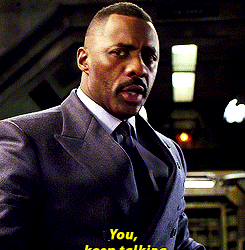
Now that sounds like something me and my own magic system might be interested in reading.
I think what I'm looking for is not Science Fantasy, (which seems to be just a synonym for science fiction), but Scientific Fantasy.
I want a world where magic is just a fact of the world and is studied like any other science. It's just part of how the world works, as recognized and math'd out as gravity.
So much of Urban Fantasy fucks up the worldbuilding by just slapping a magic system on top of a world that is otherwise exactly like ours. And a world exactly like ours wouldn't exist at all if there were magic. If magic was a TOOL that people could use to SOLVE PROBLEMS, it would be USED to solve problems the same way we would think to use machines and electricity. Those solutions, and the new problems people would discover by using them, would look nothing like our world at all.
In a world that has had access to magic over a long period of time, the kinds of problems you CAN solve, and even the kinds of problems you would THINK OF AS PROBLEMS IN NEED OF SOLVING, would be radically different from the problems our world, and our technology, has developed to deal with.
Long range communication wouldn't be solved by a box with electricity trapped inside it. There would be magical approaches to solving that problem. Okay, MAYBE a crystal tablet that can display information is a good enough idea that someone would think of it. If the world is old enough? Sure, someone has probably figured out that electricity exists and can be used by people who are less skilled or comfortable with magic to solve similar problems, but magic wouldn't just be slapped onto the surface of an otherwise unchanged world. The entire structure of society and the tools it creates and uses would be completely different.
Like Senshi using earth golems as a kind of farmland that manages its own water supply and fights off pests. LIVING HYDROPONIC CONSTRUCTS. That's brilliant.
The entire fucking world would be radically changed in more ways than even a very dedicated worldbuilder could ever really imagine. Public transit could be magic based, even teleportation based. Energy grids could be powered by magic. Something equivalent to an elevator could be done through levitation fields. Shipping could be managed through demiplanes that open in multiple places. Medical science could incorporate magic as a diagnostic tool. With an extreme level of fine control, surgeons could heal incisions or tissue damage without stitches. Magic wouldn't need to be a separate form of education, the basics would just be taught alongside the water cycle or the respiratory cycle.
People would make jokes 20 years after graduating about how mana is the powerhouse of the soul.
THERE'S NO GODDAMN REASON FOR A WORLD WITH MAGIC TO BE LOCKED TO THE AESTHETIC AND TECHNOLOGICAL DEVELOPMENT OF MEDIEVAL EUROPE.
Magical constructs could be teleported into orbit for space research. Think of the possibilities of a magic space race! Astromancy wizards summoning familiars on the moon!
There's so much more you can do with a magical setting than mud and castles and dragons and liches and horses. It's FANTASY! FANTASIZE! IMAGINE SOMETHING!
What if instead of meeting in a tavern you were stuck on a 3 hour connecting flight together on a sky train. You meet at the airport on your way to a tourist trap in the fey realm for spring break while working towards a degree in Arcanodynamics, and bond over the fact that it kinda sucks, and that pixiedust pretzel was in no way worth SEVEN gold, and their internship at the alchemical research hospital doesn't pay enough for this shit.
10 notes
·
View notes
Text
One of my primary beliefs is that anyone who wants to solve or mitigate a problem should care about correctly understanding the causes of that problem. And I find that often, people prefer to make assumptions about what causes the problem and then get upset when you challenge their assumptions, even when you're right.
I think those of us who are activists have a tendency to notice when people with power and authority make incorrect assumptions about us or about other people they have authority over. We help each other learn to notice this.
We know it happens in health care: We know that doctors often assume that a patient's symptoms are a result of the patient being fat, and that the patient "just needs to lose weight" in order to feel better, even when something entirely different is causing the symptoms. We know that psychiatrists sometimes assume that a woman having interpersonal issues must have borderline personality disorder or bipolar disorder, because obviously those are the right labels for difficult women, when actually she's autistic and the psychiatrist didn't bother to check.
We know it happens with how children are treated: Whether we're activists or not, many of us remember times when our parents or teachers acted like we were breaking rules or causing a scene for no good reason, when actually something was wrong and we were trying to solve the problem/get help/generally cope as best we could, and we just weren't asked why we were acting that way.
But the reason I'm making this post is because we, as activists, are not immune from making bad assumptions either.
So many people on this site, and in many activist spaces I'm in, talk as if every incident of harm (at least, every incident where "the other side" causes harm) involves deliberate malice--often nothing but deliberate malice. There's rarely any public consideration of other potential causes, such as genuine ignorance, competing priorities, differing but legitimate values, being stretched too thin, etc. Even greed sometimes gets left out of the conversation, despite the fact that I'm quite certain that greed is a more common motivator than sadism.
I want to be clear that I'm not making this point to cast the powerful as victims, to argue that they're misunderstood, or to scold you about being nicer to your oppressors. That is not my motivation.
I am making this point because when we assume that someone is motivated by malice and sadism when they're really acting from ignorance, greed, a different set of values, or a lack of time/resources to do things in the way they should be done, we are going to propose the wrong solutions.
A teacher who's not using universal design because they hate disabled kids and want neurodivergent students to suffer needs to be removed from the classroom. A teacher who's not using universal design because they don't know enough about it needs additional training. A teacher who's not using universal design because they're totally overwhelmed by having 35 middle school students in each of six periods throughout the day needs more resources and support. The problems look similar, or even the same, at first, but when you look closer, you see that different causes require different solutions.
Obviously, there are groups whose motivations are a lot less sympathetic than those of an overworked teacher. But even when it comes to, like, execs at health insurance companies, I'm guessing they're more likely to care about making money and be pretty apathetic about the details, rather than cackling gleefully at the thought of driving people to bankruptcy or causing them to suffer and even die for lack of care.
And if we want a more equitable world, I think it's logical and even vital that we know what causes the problems we want to solve, because that affects what the correct solutions are and can guide us in avoiding unintended consequences.
10 notes
·
View notes
Text

Hey all!
As promised, an update with transparency on how we intend to tackle the color relationship for breeding going forward!
Through prioritizing a user’s ability to breed for consistently favorable results–both from wishing to improve and maintain general aesthetic appeal and from a choice to increase cat scarcity–the PB team has reached a conclusion regarding the way we have set up colors.
Over the past few months, we’ve been developing and testing an alternative approach to the “wheel.”
Originally, breeding was developed using a “color wheel” which would be used as a point of reference for the range of colors two cats could produce. Colors on the wheel between one another would be included in the potential offspring.
Problems we ran into with this system:
Results get unpredictable. Being fully dependent on RNG, wide-range pairs are frequently able to produce unintuitive color combinations.
These chaotic outcomes can de-incentivize breeding with our setup, as Pawborough aims for breeding to be meaningful and rewarding near every time, rather than producing frequent duds en masse which de-values most cats.
A wheel system means that every new color added will broaden two cats’ breeding color range, further increasing the above problems and causing user fatigue. This limits how much color variety and customization we can add.
Ranges are up to the gradients of the wheel, which may also cause user frustration and fatigue. Approaches to setting up a horizontal gradient vary depending on which aspect of a color’s HSL is prioritized for the gradient. Results are inevitably hand-selected. Two oranges can end up on opposite sides of the wheel, for example, frustrating a user who wishes to breed for an orange range and gets red or green in the mix. (Simply put: Two colors which look similar can be very different, and cause issues with how to organize them.)
As a summary: Colors are challenging to organize with such simple conditions, and outcomes fatigue users, produce unintuitive results, and limit our ability to expand the colors.
So what is the solution to these problems? Introducing… a paint mixing system!
The paint mixing system categorizes a color into three categories: Hue, Saturation, and Luminosity
Hue includes the following:
Greyscale
Brown
Red
Orange
Yellow
Green
Teal
Blue
Purple
Pink
Saturation includes the following:
Saturated
Desaturated
Luminosity includes the following:
Light
Medium
Dark
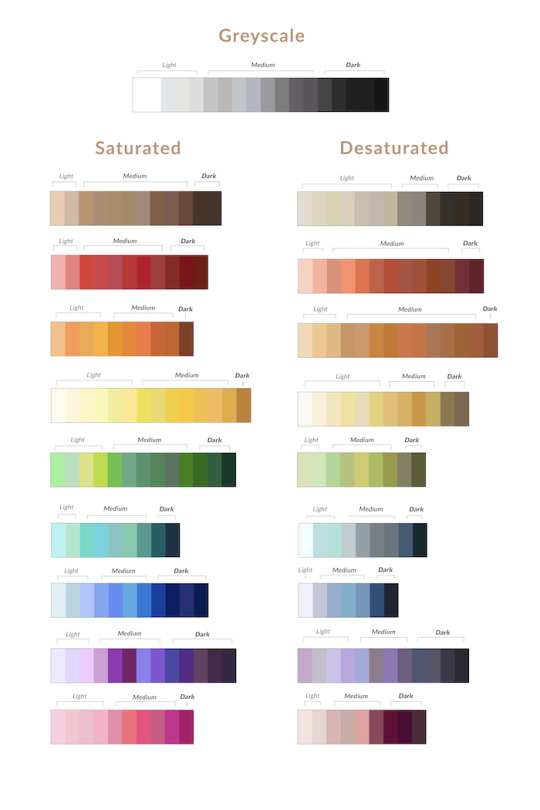
This is not the final lineup, as we are picking accent colors and consistently tooling if there are any weak or lacking color combinations based on user base preferences and enjoyment. By the time this all hits the website, it’ll be final!
These three categories are then taken into account for the breeding ranges.
Outcomes result with whatever categories the cats possess.
For example, a Blue, Light, Saturated color and a Brown, Light, Desaturated color will produce a range of Brown and Blue colors which include only those that are Light, Saturated, and Desaturated!
In addition, in order to preserve some of the fun of large ranges and breeding strategy while remaining intuitive, certain hue combinations will broaden the range based on properties of paint. Breeding a Red and Blue color will produce a range of Red, Blue, and Purple colors!
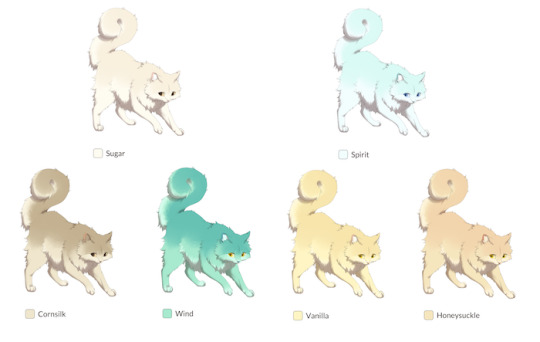


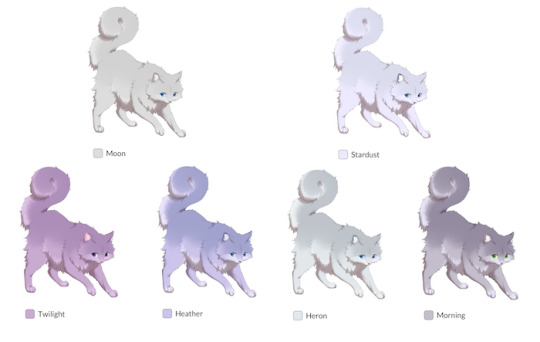
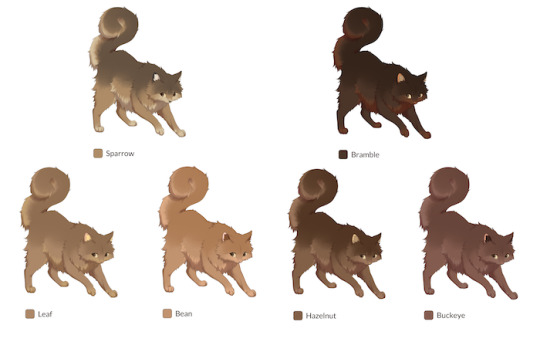
For comparison, here are those same pairs with the wheel system, with potential offspring colors intentionally picked to show the amount of disparity in this system in comparison to the more consistent examples above:
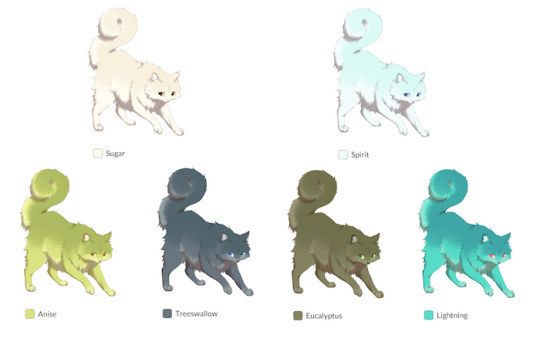
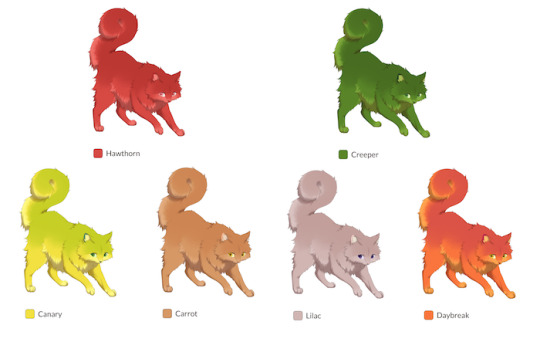
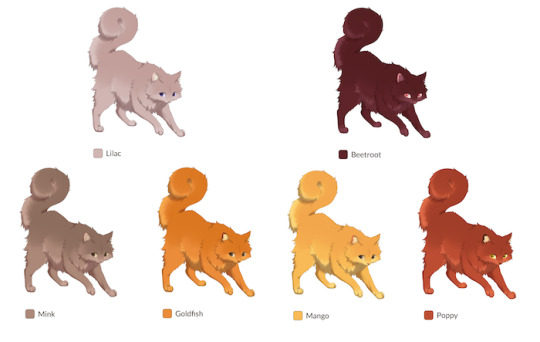

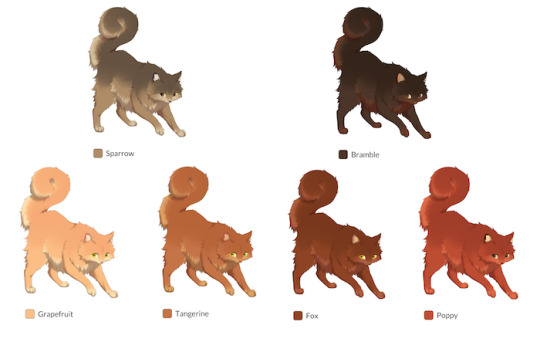
These outcomes are night and day, giving users a much needed increase in control over what they breed for! Much of the team has felt relief and surprise at the sheer amount of improvement seen in the testing results.
The color picker in the cat generator will also have indications of these categories, with ease to navigate between hues.
So many colors.. but what about Generation 1 cats...?
We've solved the breeding issues that come with a large wheel. Ranges will be relatively predictable and easy to control or curate.
However, the other question raised is: what becomes of generation 1 cats? The more RNG there is, the higher the number of colors, the more likely you are to generate clashing colors when getting a new cat. How can we prevent the majority of generation 1 cats from looking like a mess?
Well, the benefit of a system like this, which pays careful attention to color categorization, is our ability to further categorize "pools" of color used for G1 generation. For example, a G1 cat may roll to only pull colors from a "pastel" pool, which only includes light and saturated colors, or the "gothic" pool, which only includes greyscale, red, and purple colors.
These are just examples, but we've been testing by generating several different pools, tooling with their conditions, and workshopping the amount of control we have over the pools.
Of course, the "all colors" pool will still exist! However, weighing color generation in this way will provide more favorable outcomes the majority of the time, and compensate for a large wheel. We intend to have a great deal of pools to upkeep a healthy amount of RNG and variety while maintaining general aesthetics.
It's the best of all worlds! A large and expansive color variety, easy and intuitive breeding, and the organic population of the site is on average aesthetically pleasing!
I hope you all enjoy what we have here!
In other news, we are continuing color testing in an effort to make sure all undercoat/overcoat combinations are clean and aesthetically viable. I am fairly certain that we've settled on an excellent solution for the problems faced with consistently clashing colors when placed on the compositions of typical cat patterns. Not everything always works, but I'm confident in the results we're seeing. Further testing is required before we announce the latter half of the color and pattern system revamp, but good things are in store!
Thank you! See you all next month!
20 notes
·
View notes
Text
There Are Different Levels to Parenting Competence.

The ultimate one can occur only when there is similarity between a parent and a child. The parent is perfectly equipped to give advice to the child, who faces a similar problem and tends to have similar reactions to that problem. Thus, the parent can relate and give advice.
The slightly lower, yet still efficient process occurs when the parent is highly attuned and empathetic towards the child despite their differences. As a result, they can imagine or brainstorm solutions together, which leads to an expanding trial and error process, where the teacher learns together with the student.
The neutral level occurs when a child faces a generational karmic blockage passed down from a parent. That means, they’re facing the same issue a parent failed to resolve themselves. The best situation that can come out of this predicament is the parent honestly admitting that they have no clue how to help and feel equally challenged in that given area. This way, the child has space to at least explore and maybe come up with ideas to fix the problem through exposure to other external factors.
These levels of parenting are tolerable and can lead to good outcomes. The next two are an active detriment to a child’s life and take years to fix, reaching into adulthood.
The first one is a child being scapegoated for not continuing a bad family pattern. A family tends to have a certain behavioral scheme they refuse to change, which is a detriment to some area of their life. They are completely unwilling even to discuss the issue. When a new generation grows up and shows that they could potentially try to solve the issue everyone is avoiding, they face criticism, and they’re being made to feel like they’re in the wrong. However, since the family tends to avoid the issue, it gives the child wiggle room to explore its solutions through other people outside the family circle, and if they come back with the issue solved years down the line, they may even hear “good for you”. The family circle didn’t want to go through the pain of dealing with the issue, but they welcome the fixed positive circumstances, and give the child some space for exploring the issue on their own, even if initially they were critical of their attempts. As a result, the child’s individuality and desire to make a positive change in their life is partially intact and able to surface enough to bring results.
The last stage, and sadly the worst, is being exposed to complete narcissism and attempts at extermination. That is when a parental figure is so triggered, they train the child into repeating their bad patterns by using fear conditioning, which sounds something like “you will only achieve xyz and fulfill this basic need in life if you do the exact same wrong thing I am doing and if you can’t, you will never get what you need”. That puts a child at a huge detriment, as it gives them no space to discover how to go about fulfilling their needs in a given area, since they have been conditioned into being afraid of looking at themselves. The child will now have to go through a very high degree of trauma to first get rid of the negative pattern that they most probably set up their whole life with, and then through a long process of discovering who they are under that trauma, and then they get a delayed start in life at being able to even begin finding out who they are. Simply battling the fear of embracing anything else in life rather than the abusive patterns that become our safety blanket in this area can be traumatizing.
The most difficult thing about this classification is, in every family, we all experienced all of these dynamics simultaneously, next to each other, in different areas of life, depending on the issues our elders brought into this life. As a result, the situation becomes very tangled and complicated.
So you may for example come from a very successful family that fosters your own talents and enables your own success, but has a huge shadow relative to personal relationships. As a result, you might find yourself positively goal driven but very lonely. One does not exclude the other, and to be truly happy in life, you need to deal with the whole scope of experiences and deal with each one of them accordingly, from the easiest to the hardest.
#spiritualjourney#spiritual healing#spiritual path#spiritual awakening#spiritual development#making spirituality real
20 notes
·
View notes
Text
Thoughts on Sci-Fi and Fantasy
So, for the past few months I've been writing a sci-fi story called The Eiden Heresy. In that time I've had the opportunity to explore a genre I haven't and it's been very enriching. One thing I have noticed though, from a writing perspective, is that Sci-Fi tech and Fantasy magic operate very similarly. To the point they can merge into one at times. In some media magic operates as a form of physics and engineering, with Arcane and Full Metal Alchemist being a good example of that. So I'm going to expound on my thoughts here.
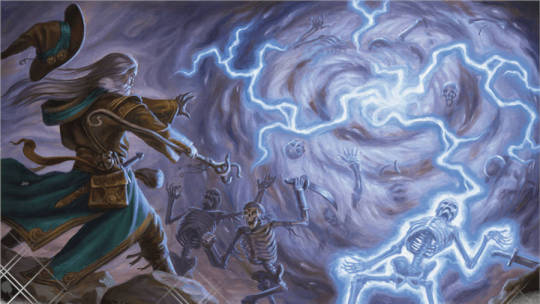
The primary thought I've had is that Fantasy and Sci-fi as settings, merely alter the aesthetics of what is essentially the same thing. The tech we see in Sci-FI, and the magic seen in Fantasy, are essentially the unrealistic solutions to unrealistic problems within a story. By which I mean in a more grounded work of fiction such as office place romance, problems are realistic. Missing a bus is a realistic and potentially disastrous problem, gets you in trouble at a job you need to pay rent after all. Whereas in Sci-fi and Fantasy, the potential solutions to these realistic problems are so numerous they don't register as issues. A good example is in the picture above, an actual problem in a Fantasy setting is the approaching horde of skeletons. A solution to that is to wave your hands and chant in forgotten tongues to throw some lightning. In a Sci-fi setting, the image below offers an example of a problem which might be faced. The need to genetically engineer to flora to survive on an alien world is solved by observing complex strings of data and constructing specific machines. Both are unrealistic solutions to the problems faced. One requires you know the lightning throwing spell, the other that materials for the tech are available. Functionally, magic and tech are both the solutions to problems found within a story they only differ in their aesthetic. There's a continuum along which we can place the futuristic tech in Star Trek, magical science as found in Arcane, and the magic of shows like Merlin.
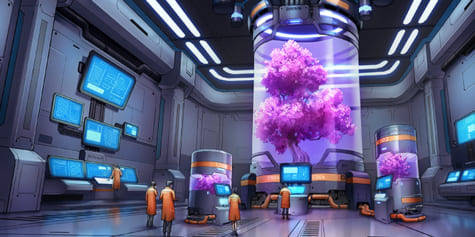
The point of the tech we see in shows like Star Trek, is not necessarily to ask how it works. That can be fun and interesting to discuss obviously. However in my view the point of these problem solving devices is to make audiences go, "wow it'd be so cool to have that". These pieces of fiction allow us to wonder what it would be like to have these fantastic solutions to little problems. It also prompts us to consider how we tackle the larger ones. The horde of skeletons sent by the Lich King who is at war with a kingdom of light and the need to colonise a distant world because of the consequences of climate change. These are far bigger problems we can't consider in everyday life because those small problems hold us back from it. Then we ask, well what about fiction like that? Where there are unrealistic problems without unrealistic solutions.

Zombie movies, books, or games are a great example of this type of story. Characters have no means to tackle the number of undead, and need to just avoid them where possible. However because of this something interesting happens where conflict actually arises from realistic issues such as tense group dynamics, resource shortage, or illness rather than Zombies. A similar issue happens in Dystopic fiction occasionally (though living in the UK at the minute I am cautious to call a Dystopia unrealistic). In such fiction, you'll find that because these large authoritarian governments or capitalist hellscapes are basically impossible to challenge directly problems are more realistic. We have characters who need things like obtaining enough followers on twitch to feed themselves, avoiding zones where you're likely to be attacked by authorities, tension between characters living in a stressful circumstance. The place where Dystopian fiction typically differs is that characters will gradually work towards finding a solution or changing things after encountering potential allies. Not always, but usually in early books there would be very little direct confrontation in with the corporations or government which created this Dystopia. Not always though, there's plenty of variation and many examples like 1984 where direct confrontation never occurs.
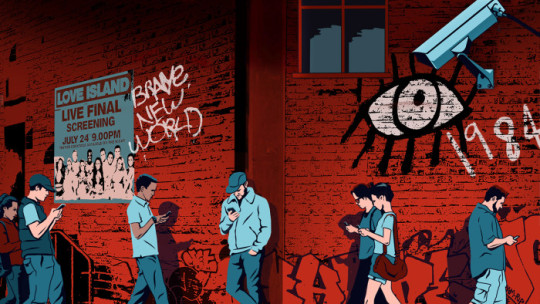
On the opposite end of the spectrum we have unrealistic solutions to realistic problems. Here we tend to see the "rules" of tech and magic get very clearly defined as these works of fiction explore solutions we can't have to problems we do. Strangely we tend to start dealing with economic or sociological problems after a while, because all these new solutions have extensive knock on effects. Alternatively we get shows like Little Witch Academia in which the unrealistic solutions are less accessible than the realistic ones which are almost as effective. Which can explain why the magic or tech is not used widely as its only useful in dealing with unrealistic issues for which there are no realistic solutions. I'll admit the whole unrealistic solutions, realistic problems thing is a bit more widespread in anime.

With all this you might ask where my fiction falls into it. The Eiden Heresy is a Sci-fi novel set on an alien world with living energy beings called Eidolons. Humanity went there 2000 years ago, there was a war, and a pocket colony of humans still survives. Their government operates on a basis of prestige where the more famous and respected you are the more political power you wield. Which forces the King to hear you and listen to legal reforms you demand. They use semi-futuristic technology which was either rediscovered or reverse-engineered from the wreckages of their space ships. However those outside of affluent areas usually only possess technology equivalent to the 1910s. This is partially a means of the nobility maintaining control and because powering such technology requires an Eidolon be captured. So I'd say the interesting thing about that in regards to what I'm discussing is that some people have those unrealistic solutions while others don't. There's a disparity in this society which creates a lot of conflict between different characters. Many of whom have their issues with the powers that be.

Anyway this is all just my opinion as a writer and person who wrong constantly. I'd love to know what you all think.
#author#writing#writing advice#writing tips#fiction#analysis#media critique#sci fi#science fiction#sci fi and fantasy#magic#tech#narratives#aesthetics#stories
5 notes
·
View notes
Text
I need to talk to someone about Good Omens: Season 2 and none of my friends have watched it yet. I don't know much about how Tumblr works, so I'm tossing this into the # to see if anyone has similar thoughts/insights.
(Warning for all the spoilers.)
I enjoyed it. I enjoyed it quite a bit! I love my gay demon and angel. But I also felt like it wasn't very good.
Which is WEIRD because it had a lot of ELEMENTS of being good. But it's like they weren't put together very well.
(NOTE: I don't want to harsh on anyone else's joy! If you unequivocally loved it I am delighted for you! Rather jealous of you, in fact.)
Most glaringly Metatron and the twist at the end came out of nowhere. It was a cool twist, but it was a jarring departure from everything else. I feel like this could have been avoided and the setup of Aziraphale being a good replacement for Gabriel could have been elegantly shown by introducing Metatron earlier and having him irritably watch the other angels bumble about and be flouted by Aziraphale.
The climax felt like an escalation of incompetence. I know angels/demons being hapless on earth is a running gag, but having demons march pointlessly into a deathtrap seems a bit much. And the demons get into the bookshop because Maggie makes a silly mistake--it would have been so much more interesting if Shax had tricked her. The fire extinguishers were charming, but I wanted like four more clever bookshop-traps for that sequence. The halo deus-ex-machina made all the previous effort feel quite pointless. And the idea that using the halo would start a war seems arbitrary and is dismissed just as easily.
And it felt very sad that Aziraphale was perfectly confident Crowley could come back and save them from the demonic 'legion'. But then he…didn't. He went off to resolve a different problem. And that problem needed to be solved, but…just like everything else it didn't hang together well?
A lot of obstacles are resolved not by inventive solutions, but by the characters doing the same thing, just harder this time. Nina doesn't want to go into the bookshop and Crowley yells at her to do it. Aziraphale doesn't want to give up Gabriel, Shax yells at him to do it.
Many of the flashbacks were delightful. I LOVED the 'I was wrong dance'. And bless them for giving us a kiss. That terrible kiss.
I just…loved all the ideas. And many of the moments! It feels like a handful of jewels assembled into an unpleasantly garish piece of jewelry, and I can see the cheap paste holding it together.
I still do hope they get a season 3.
18 notes
·
View notes
Note
Hello, The Prince of Time that isn't a mind player here again.
First off, thanks for the clarification and ridding my mind from all this mind stuff. Really helped me.
Second, I actually have great control over my power, and could easily explain what I do with them:
I can cause things to be done faster.
See a falling rock? I can make it reach the ground faster.
Need someone to solve that puzzle? I focus my power on them and they solve it in record time, however for them, time stayed the same, they just managed to find a solution faster then usual.
Have a needlessly complicated plan happening in motion? I can improve it and make it faster to execute, or remove entire parts from the equation and replace them with faster alternatives.
I don't destroy literal time, but rather the similar concept of an Action's time to be executed. So in "Title interpretation" terms it seems to be somewhere between Connotative to Emblematic (I guess I'll call that Sub-Aspect "Duration" for any future reference)
However, as I said before, since the concept of Duration is real close to literal time, I've been struggling with on accident or otherwise to not just execute "Halve this guy's life Duration" or "Halve the Duration until time limit for winning the session" Because on the one hand, this sounds tempting and awesome and would just be a great "Fuck Sburb, we ball" method of dealing with this time hatred shit, but on the other hand it doesn't seem... (Don't say fair, your denizen may use it against you.) like doing so will help the others in my session... and obviously no level of... as FAQ call it "Revelawesome Hammer-Hitting" will remove that ever-present possibility of just giving up and destroying this session or any subsequent session I'm in, even if I'll have a different role. It gives ability, not remove it. and I had that duration ability ever since I did my first quests.
So yeah, how do I remedy those thoughts, or at very least, ensure that I don't break down and break this session with me?
Okay so it's a little like King Crimson. And I'm correcting the record on two things. Gaining more abilities you have to consciously use was meant to make you better at consciously controlling your powers so you don't accidentally use them, not take anything away. And this concern of your will end once the session does, because you don't carry over abilities. Some guys report having minor "tricks" or remnants of their Whispers from their Native Title, but you'll probably never King Crimson again once your tenure as Prince of Time is over. Unless you mean the mindset might carry over, in which case yeah I'll help.
The main question I'm asking is, what are the negative consequences of speeding up/skipping/erasing time in this fashion? The target experiences time at the "normal" rate, even though it's actually accelerated. So if I were to take an hour to draw a map, and you erased time, it would be an hour for me from my perspective, five minutes or so for everyone else objectively, essentially. Could result in horrifying time chamber stuff if you make someone experience several decades worth of time in a few seconds (this is a great attack though), and I could see annoyance if you start "rushing" people against their will (especially sleeping, it could cause weird weather phenomenon in the Land and will probably cause some sort of desync with the dreamself). But other than that, I fail to see the problem. You think that it would be unfair to use your time-shortening powers to make the session "hurry up", but Princes are meant to bring things a conclusion. Your duty is to maintain the timeline, so it's your job to act with discretion. And I'm just taking a wild guess here, but if you have the ability to create little bubbles of sped-up time, I'm guessing that the Session is going to make this relevant. As in "the Session probably has lots of duties and quests and puzzles which take lots of time and waiting, but the Session is ending early so you might have to squeeze 2 or 4 years worth of effort into 6 months".
On the subject of fast-forwarding, I'm guessing that you can't do that on the entire Session at once, which means even if you "speed things along" you'll still have to get in the weeds. But even if you could affect the entire Session, think about it for a second. The Time player has to make sure the Alpha Timeline progresses in such a way that the Session reaches its proper conclusion, without becoming Doomed in the process. If you're fast-forwarding the Session, without you in it, you aren't doing that critical work, which means the Session goes poorly, faster. Speed things along, sure, but do it on the "smaller scale", accelerating excessively time-consuming tasks, or anything where "things getting done faster" is a good thing. It's like the hacking minigame in BioShock, where you can make the puzzle go faster, but you only fast-forward once you've actually solved the puzzle.
Might I also reccomend that you read The Magic Thread?
6 notes
·
View notes
Text




From the sound of it, it sounds like Originium might have been made as a solution, rather than always just being a problem.
I could be misreading it, but the way it's described in that last line, it sounds like it was created to solve a problem. To unify people.
And that just makes me wonder if there might be similarities between the Seaborn and Originium.
Because Seaborn are resistant to Originium, in some way, if I'm remembering right? And if they both have something to do with unification...
Could they have both been created as a solution to the same problem?
3 notes
·
View notes
Text
Cincinnati Gasped At The Idea Of ‘Trial Marriages,’ But Practiced Them Anyway
Judge Stanley Struble was fed up. As he looked over his docket in 1929, the judge grew suspicious that the Hamilton County Courts were being forced into abetting the immoral practice known as the “trial marriage.” It was increasingly common, Struble noticed, for Ohio teenagers to elope to Northern Kentucky, where marriage laws were much looser, and then, when the match proved unsatisfactory, to ask Ohio courts to annul the union on the basis of their immaturity. Judge Struble told the Cincinnati Post [30 November 1929]:
“These marriages seem to be becoming a habit among youthful couples, and clerks who issue licenses in such cases seem to be interested only in obtaining the fees, the same as would appear the case of those who perform these marriage ceremonies.”
Judge Struble held two annulment appeals aside until further investigation revealed the motivation behind those cases. The couples placed under the microscope were Leola Stouder McCloskey, who testified that she was only 16 when she married 19-year-old William McCloskey in Covington in 1926 and Elizabeth Bruenen Edwards, married at age 16 to Robert Edwards in Newport, also in 1926. In neither case did any testimony reveal why each couple had waited three years before seeking annulment.
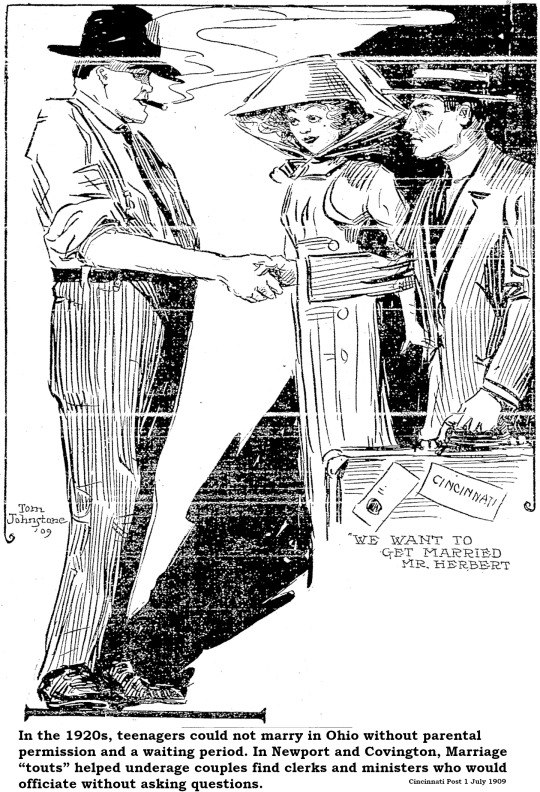
Judge Struble was reacting to a controversial topic that had stirred debate in Cincinnati since at least 1906 – the idea that temporary marriages, giving couples a no-fault option to leave the marriage after a brief trial period, were the solution to the social problems of divorce. The idea was most popularly promoted by pioneering anthropologist Elsie Clews Parsons in her 1906 book, “The Family.” Almost from the day it was published, Doctor Parsons’ book was widely (if surreptitiously) read and just as widely condemned. The Post [23 November 1906] was editorially outraged, claiming that it was already too easy to terminate a marriage:
“The reform is needed in the other direction. We need to get rid of the feeling that marriage is a mere experiment.”
In condemning the concept of trial marriage, The Post had lots of company. Doctor Sarah Siewers, one of Cincinnati’s foremost suffragists, told the Post [20 November 1906]:
“Abominable! Who ever heard of a woman making such a fool of herself? Why, the plan Mrs. Parsons proposes means the end of society and the home and a reversal to the dark ages. The whole thing is disgusting to me. The only solution to the divorce problem is for men to behave themselves better and for women to insist on being treated as equals, not as inferiors or slaves.”
Mrs. Jessie Oliphant, described as a “Norwood club woman,” declined to comment:
“It is a very serious problem that Mrs. Parsons has started out to solve. The subject is very distasteful to me and I would rather not discuss it.”
Judge John A Caldwell was four-square against the idea:
“Trial marriage could be no marriage at all, and would ultimately destroy the marriage relation altogether. Such a system would destroy the home, the greatest of all our institutions, and would illegitimatize thousands of children”
The more opinions the Post published in opposition to trial marriage, the more letters it received in support of the concept. Furniture dealer Maurice C. Williams wrote [26 November 1906]:
“The views of Mrs. Parsons, as expressed in the book, ‘The Family,’ are as the faint rays of a dawning day which become gradually more resplendent until the shimmering light gives way to the sun in all its glory, casting its benignant influence over all. So it will be with man. The ideas advanced are along the lines of altruism.”
In the same issue, cabinet maker Fred Walthard (Yes, most of the supporters of trial marriage were men.) wrote:
“The majority of marriage ceremonies still take place in churches or similar places, where a priest is the ‘matador.’ But you don’t find one couple out of a thousand that are advanced enough to seek the judgement of a reliable physician concerning their match. I am afraid the divorce problem will never be solved so long as law and religion have everything to say about marriage and science nothing.”
An unnamed judge of the Hamilton County courts dabbled in statistics and informed the Cincinnati Post [28 October 1909] that all marriages were trial marriages anyway, and that he had the data to prove it. Looking over his cases for the past month, the judge found 140 divorce suits. Of these, 107 requests for divorce were filed by couples married less than 10 years:
“’Proving,’ said a Judge of the Hamilton-co. courts, ‘that marriage is naturally a 10-year-trial proposition. The figures indicate to me that couples who manage to live together for 10 years will in most cases stay married the rest of their lives, and the couples unsuited for each other usually find it out before 10 years are over.”
The anonymous judge scoffed at the idea of a trial marriage, since his experience showed that all marriages had a natural trial period built in. A closer look at his numbers revealed that 73 divorces – more than half of the month’s total – involved marriages that had not yet marked a five-year anniversary.
Spotting a saucy topic, the entertainment industry jumped on the trial marriage bandwagon. Cincinnati audiences enjoyed a play and a couple of silent films based on the trial marriage concept.
As late as the rock ‘n’ roll era, the Post’s medical advice columnist, Dr. George W. Crane, warned young women to avoid over-sexed men who proposed this immoral arrangement [16 September 1958]:
“Trial marriage usually is suggested by a person who may feel sexual infatuation but no true love. And there is a whale of a difference! Trial marriage definitely does NOT benefit the girl. She makes the sacrifices and is likely to be left pregnant and unable to earn a living for herself.”
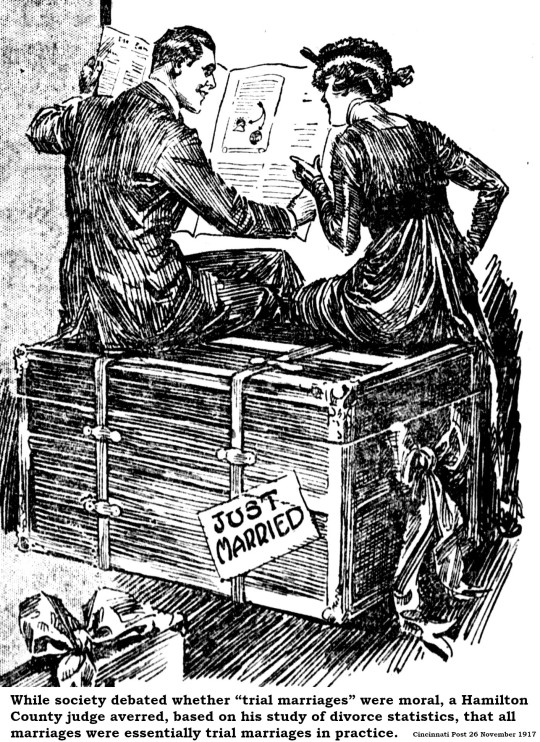
6 notes
·
View notes
Text
Haven't done a computer status update in a little bit. Raspberry Pi media server has been psuedo-retired. It's currently still functioning as a media server for a christmas display at my wife's work until the end of December.
It has been successfully replaced by the Dell Optiplex that I got from work. I was able to skip the process of building a migration script for the server (to allow files to be moved and refound via filename & hash), but only because I've been mapping storage outside the server's webroot via link files in the upload directory. So on the new HD the files are actually in the upload directory rather than linked to it. As far as the server knows they're in the same place.
I transferred the software between machines by making a new install of vogon on the optiplex and then importing a mysqldump of the existing install into it, bringing the user accounts, media data, and other configuration elements with it. I did end up changing the storage engine of the data and data_meta tables into innodb (from isam) and adding some additional indexing. There were some noticeable performance differences on the generated join queries between servers. We were looking at 7sec+ lookup times for searches in the audio module. I'm still not sure if it's a mariadb version difference between raspbian and ubuntu lts, if something got corrupted in the export/import process, or if it was some strange storage lookup difference between running the database off of a SETA Hard-Drive versus an SD card. I initially thought maybe it was a fragmentation issue, but the built in optimization processes didn't really impact it, but with the adjustments to the indexing we're regularly getting query times measured in microseconds versus seconds, so it's working pretty well now.
The x86 processor and the faster storage (without the power dropout issues) have really improved the experience. Especially with reading comic books.
If I haven't explained it before, the way the CBZ reader works is that it sends a file list from the archive to the browser, the browser requests an image, and the server extracts the image data into RAM, base64 encodes it, and sends it back to the browser. It's a process that is bottlenecked by both CPU and storage speeds, so it's noticeably snappier on the new machine, even if the CPU is over a decade old at this point.
I'm actually considering taking a crack at forking mozilla's pdf.js to work a similar way, sending a page of data at a time, to decrease transfer times and allow lower memory devices to open large PDFs without having to actually download the whole thing. I suspect that means I'm going to have to build smaller single page PDF files on the fly, which would mean coming up with some kind of solution for in document links. I'm still in the phase of deciding if it's enough of a problem to put effort into solving, so I haven't done enough research to know if it will be easy or difficult. It's always hard to tell in situations like this because just about every web reader project assumes downloading the whole file, and the question is do they do it this way because it's hard to sub-divide the format, or do they do it because full clientside logic can be demoed on github pages.
3 notes
·
View notes